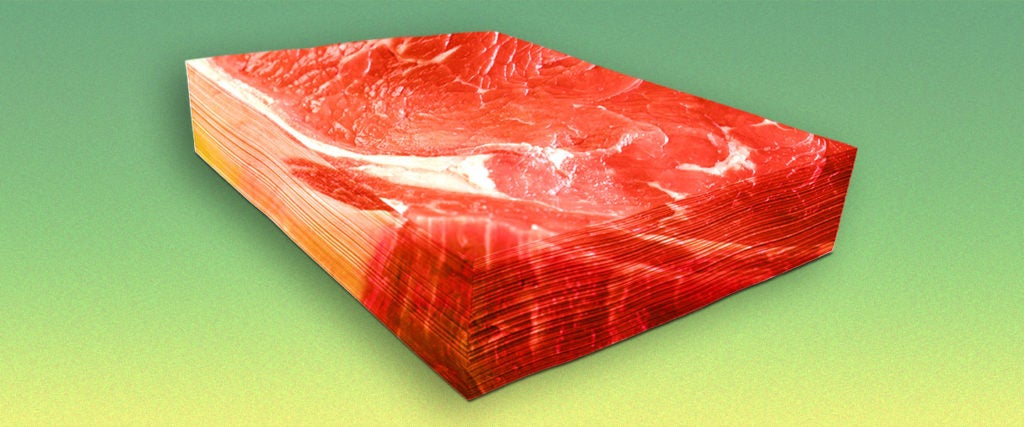In a February interview about climate change, Supreme Ruler Bill Gates said, “All rich countries should move to 100 percent synthetic beef,” and cows everywhere heaved a sigh of relief. Just in time, less than a month before the interview, McMaster University researchers developed a new method of growing “sheets” of cultivated meat that promise more natural flavor and texture than other alternatives.
Essentially, the researchers were successfully able to grow sheets of cultivated muscle and fat cells, taken from real animals, which they then stacked together. When stacked, the sheets of cells naturally bond together before they die, creating a single, solid piece of savory flesh.
This is an ideal method of making lab-grown meat for a few reasons, the first being that it’s more efficient than other means of producing cultivated meat. “Usually, to grow tissues in 3D, you need a vascular or blood supply network,” says researcher Ravi Selvaganapathy. “This will feed the cells and provide it oxygen, much like any animal’s blood supply network would do. This has prevented the tissue engineers from growing 3D tissues. Here, we overcome this problem by growing cells in 2D sheets, and assembling them finally into a 3D structure.”
The other benefit of growing meat in sheets, as opposed to one solid hunk, is that it can be precisely tweaked to replicate the fat content and marbling of any cut of meat, as well as its nutritional composition. It would be similar to milk, in that you can buy it at all sorts of fat contents. And even though the researchers didn’t eat the mouse meat described in their paper, they did cook a sample of meat they created from rabbit cells and said it tasted just like normal meat.
While it all sounds unusual, any advancement in the area of cultivated meat is something to be celebrated, and not only because fewer animals need to die. “Meat production requires animal feed, the cultivation of which takes a lot of land and water resources,” Selvaganapathy says. “A majority of land for cultivation is used in growing plants for animal consumption to produce meat. With increasing meat consumption, this is unsustainable, and an alternative is needed.”
I know you’re already hankering for a tasty sheet of meat, but as with all innovations, it will take some time before sheet meat arrives on the consumer market. “This is new technology, and as with anything new, it will be expensive — 100 to 1,000 times more expensive initially than farm-grown meat,” Selvaganapathy explains. “It will probably be a premium product first, and then as economies of scale are realized, it will become cheaper over time.”
Whenever that happens, I’ll take 10, uh… sheets?

